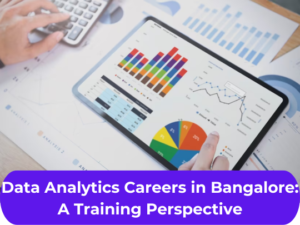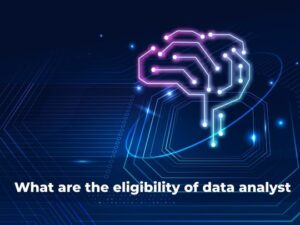The ultimate list of tools that any Data Analyst should consider having to improve his or her efficiency at work.
Analyzing data entails the capturing, sorting and understanding of data with an aim of finding solutions. In order to achieve this efficiently, data analysts use tools which improve their efficiency and the equirements of their tasks. Here’s a detailed look at the top 10 tools every data analyst should use:Here’s a detailed look at the top 10 tools every data analyst should use:
1. Microsoft Excel
Overview:
Excel is one of the fundamental instruments used in data analysis and for their handling it is considered one of the most flexible and easy to use.
Key Features:
• Data Manipulation: The formulas and functions help in organizing and computing the data while pivot table aids in analyzing it.
• Visualization: Reporting tools and make charts, graphs, and dashboards on the data points and trends.
• Data Cleaning: Identify and achieve the outcomes of the data cleaning and preparation work.
2. SQL (Structured Query Language)
Overview:
SQL is the most used language used for accomplishing queries in relational databases.
Key Features:
• Data Retrieval: Organize large databases by means of questioning.
• Data Manipulation: Maintain data by tools like inserting, updating, or making deletions on databases.
• Data Aggregation: Generate elaborate aggregations, as well as join operations?
3. Python
Overview:
Python is an interpreted language that belongs to the family of scripting languages and finds application in data analysis and machine learning.
Key Features:
• Data Analysis Libraries: They use library such as the pandas, NumPy and the SciPy as their primary tools in handling data.
• Visualization: Further, build complex GUI graphics with help of libraries such as Matplotlib, Seaborn and Plotly.
• Automation: There should be routine data analysis jobs and activities automation.
4. R
Overview:
R is another language that is used in statistics and data analysis, specifically preferred by statisticians.
Key Features:
• Statistical Analysis: Carry out the multivariate statistical analysis and other hypothesis testing procedures.
• Data Visualization: To come up with more advanced visualizations, you need to incorporate the ggplot2 as well as other more advanced libraries.
• Data Manipulation: Utilize dplyr and tidyr packages as is the case when handling data for further analysis.
5. Tableau
Overview:
Tableau is a popular BI software famous for the generation of its interactive and easily shareable dashboards.
Key Features:
• Visual Analytics: Make it engaging and real-time simulations.
• Dashboards: Create business intelligence full-scale dashboards.
• Integration: Integrate with other sources like spreadsheets, databases or MS office and cloud applications.
6. Power BI
Overview:
Microsoft Power BI is a tool that is used in business analytics to help in the presentation of the business intelligence capabilities and interactive business visuals.
Key Features:
• Data Visualization: Develop and educate yourself on creating thorough and engaging reports complete with visuals.
• Data Integration: Support working with many different data types in one place.
• Collaboration: Discuss findings and work on reports within the company.
7. SAS (Statistical Analysis System)
Overview:
SAS stands for Statistical Analysis Software that is one of the utilities which is applied in technologies of superior analytics, business intelligence, data management, and also predictive analytics.
Key Features:
• Statistical Analysis: Discuss the results of the complex statistical analysis and the capacity for predictive modelling.
• Data Management: Be able to contain and manipulate large amount of data and information.
• Reporting: To produce reports with details and graphs.
8. Apache Spark
Overview:
Apache Spark is an open source cluster computation system designed for large scale data processing.
Key Features:
• Big Data Processing: Fully exploit data at a maximum speed through in-memory computing techniques.
• Machine Learning: Engage in MLlib for efficient end-to-end big data machine learning applications.
• Stream Processing: Carry out real time processing of data through use of Spark Streaming.
Top Data Analytics course providers in Bangalore
Learnbay – Data analytics course in bangalore
360DigiTMG – Classroom data analytics course
Intellipaat – online data analytics certification in bangalore
CCBP – NXTWave – Data Analytics training in bangalore
AnalytixsLabs – Best data analytics course in bangalore
Simplilearn – Data analytics with placement course in bangalore
ITVedantu – Data analyst courses in bangalore with placement
9. Jupyter Notebooks
Overview:
Jupyter Notebook is an open-source interactive web application that has the ability to combine code and prose, along with text formatting and mathematics into a single document.
Key Features:
• Interactive Coding: Sweep into playback and live encoding modes and use real-time coding techniques.
• Visualization: Of the cgui features, the ability to include the actual visualizations within the notebook will be incorporated.
• Documentation: Integrate code, graphics or other visual representations along with the narrative text for getting an overall detail.
10. Google Analytics
undefined
Google Analytics is an online tool that analyses the usage of a website and thus the internet.
Key Features:
• Web Traffic Analysis: Basic: Track and evaluate the traffic and uses on the website.
• Goal Tracking: Install and monitor for objectives related to the reiteration of the conversion rates.
• Reporting: Create reports containing lots of different data points and measures in terms of both objective and subject matter.
Conclusion
In an aggregate, these tools afford data analysts with tools that enable effective gathering, cleaning, analyzing and visualizing data. With proper understanding and application of these tools, an analyst can greatly improve effectiveness in the generation of insights from data to support organizational decision-making processes.
Top Resources –
https://www.coursera.org/articles/data-analytics
https://www.investopedia.com/terms/d/data-analytics.asp
https://grow.google/certificates/data-analytics/



